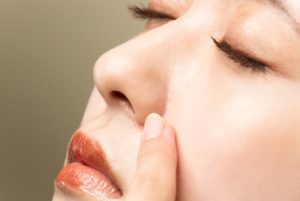

How Long Does It Take for a Nose Job to Heal? Your Ultimate Recovery Guide
A nose job, or rhinoplasty, is one of the most popular facial plastic surgery procedures today. Whether you are seeking cosmetic enhancement or correcting a deviated septum, it is natural to wonder about the recovery process. Many patients ask, how long does it take for a nose job to heal? The answer is not one-size-fits-all, but understanding what to expect can make the experience smoother and less stressful.
This warm and professional guide will take you through the rhinoplasty recovery timeline, break down each phase of healing, and share tips to promote the best possible results.
Understanding Rhinoplasty: A Quick Refresher
 Before diving into recovery, let’s briefly revisit what rhinoplasty involves. Rhinoplasty surgery can reshape the nose’s bone, cartilage, or soft tissues to improve function, appearance, or both. Some patients choose it purely for cosmetic surgery, while others have medical reasons, such as breathing problems or a deviated nasal septum.
Before diving into recovery, let’s briefly revisit what rhinoplasty involves. Rhinoplasty surgery can reshape the nose’s bone, cartilage, or soft tissues to improve function, appearance, or both. Some patients choose it purely for cosmetic surgery, while others have medical reasons, such as breathing problems or a deviated nasal septum.
Rhinoplasty can be performed using either an open or closed technique. Open rhinoplasty allows more access for complex reshaping but leaves a small external scar, while closed rhinoplasty keeps incisions hidden inside the nostrils. Your board-certified plastic surgeon will discuss the best approach for your needs during your initial consultation.
No matter the method, it is helpful to remember that healing from nose surgery is a gradual process that requires patience.
Your Nose Job Healing Timeline: What to Expect
Every patient is unique, but there is a fairly predictable rhinoplasty recovery timeline. Here is how it usually goes.
The First 24 to 48 Hours: The Immediate Aftermath
After your rhinoplasty procedure, you will probably experience moderate facial swelling, bruising around the eyes, and some mild discomfort. A splint is usually placed over the nasal bridge to help maintain the new nose shape and protect the nasal bones during the first stages of recovery.
Your surgeon may also place packing or small splints inside the nasal passages to stabilize the septum. These are usually removed within the first week.
During these first couple of days, rest is critical. Keep your head elevated, even while sleeping, to reduce swelling and help blood flow properly through the healing nasal tissues. Your surgeon may recommend applying cold compresses around (but never directly on) your nose to help minimize swelling.
Week 1: Getting Through the Early Phase
Most patients find the first week to be the most challenging. Facial swelling and nasal congestion from swollen nasal tissues tend to peak around day two or three. Breathing through your mouth may be necessary until the swelling goes down.
By the end of the first week, your surgeon will remove the external splint, and you will start to see the new contour of your nose, though it will still look swollen. Many people feel comfortable returning to work or school about seven to ten days after surgery, depending on how they feel and how visible the bruising is.
Weeks 2 to 4: Easing Into Normalcy
In weeks two through four, you will continue to notice improvement. Much of the facial swelling and bruising will fade, although subtle swelling will remain, especially at the tip of the nose.
Light daily activities can usually resume after about two weeks, but avoid strenuous exercise, contact sports, or anything that risks bumping your nose. Too much pressure or physical exertion could disrupt the healing process and increase nasal swelling.
Your surgeon’s instructions are essential at this stage. Following them carefully will help you get the best results.
One to Three Months: Settling In
Between one and three months after rhinoplasty, most patients see steady progress. The majority of the nasal swelling goes down, and breathing through the nasal passages generally improves.
You may still notice swelling at the tip of the nose, which is completely normal. Nasal skin takes time to adapt to the reshaped underlying framework. Your nose’s shape will begin to look more natural, and confidence usually grows as the new appearance becomes more refined.
During this time, it is wise to protect your healing nose from sun exposure. Too much sun can cause swelling and even discolor the skin around the surgical site. A broad-brimmed hat and gentle sunscreen approved by your doctor can help.
How Long Until You See the Final Results?
It surprises many patients to learn that while you will look dramatically better within the first month or two, full rhinoplasty recovery can take up to a year. The reason is that subtle swelling, particularly at the nasal tip, can linger for many months before fully resolving.
Patience is key. Your nose continues to refine and settle into its final shape gradually. Trust that the healing process is moving forward, even if changes seem slow.
Tips to Support a Smooth Rhinoplasty Recovery
Although your surgeon will give you detailed instructions, there are several general rhinoplasty recovery tips that can promote proper healing.
Keep Your Head Elevated
Whether you are resting or sleeping, keeping your head elevated above heart level helps limit swelling and supports good circulation.
Use Cold Compresses Correctly
A cold compress can reduce facial swelling, but never place it directly on your nose. Instead, apply it to the cheeks or forehead as directed to avoid shifting the nasal bones.
Maintain a Healthy Diet
A balanced diet rich in vitamins, minerals, and protein supports tissue repair and strengthens your immune system. Good nutrition helps your body recover from cosmetic surgery faster and more efficiently.
Stay Hydrated
Hydration is critical for healing. Drinking enough fluids will help your body flush out anesthesia and keep tissues healthy.
Avoid Vigorous Exercise
During the early healing phase, activities that raise your heart rate or blood pressure should be avoided because they can increase nasal swelling and disrupt the rhinoplasty recovery process. Light walking is fine, but hold off on vigorous exercise until cleared by your surgeon.
Be Gentle With Your Nose
Avoid blowing your nose for several weeks after surgery. A gentle saline nasal spray can help keep nasal passages moist, but consult your doctor before using anything in the nose.
Also, skip wearing glasses for several weeks because their weight can pressure the healing nasal bones. If you need corrective lenses, your surgeon may suggest taping them to your forehead to keep pressure off your nose.
Following Up With Your Surgeon Matters
Rhinoplasty recovery is not a solo journey. Attending all scheduled follow-up appointments is essential so your board-certified plastic surgeon can monitor your healing, remove any sutures, and address any questions you might have about swelling or discomfort.
If you notice any unusual symptoms like fever, extreme pain, or sudden bleeding, do not hesitate to contact your surgeon. These could signal complications that need quick attention.
Things That Can Delay Healing
While most patients heal on schedule, some things can delay your rhinoplasty recovery time. Smoking is a big one. It restricts blood flow, slows healing, and increases infection risk.
Excessive sun exposure, failing to follow your surgeon’s instructions, or resuming contact sports too early can also lead to setbacks. Being careful in these areas can make a real difference in achieving a successful recovery.
Setting Realistic Expectations: A Gentle Reminder
The rhinoplasty recovery process is not instant. Many people are surprised by how long subtle swelling can persist. Remember that up to a year of healing is completely normal, and the final result is worth the wait.
Your nose is a complex structure made of delicate cartilage, bone, and soft tissue. It takes time for these tissues to settle, adapt, and achieve stable results. Staying patient and trusting your surgeon’s expertise will help you feel more at ease.
Final Thoughts: Healing Is a Journey
So, how long does it take for a nose job to heal? In simple terms, most patients feel socially comfortable within two weeks, look dramatically improved within two to three months, but continue refining their final result for up to a year.
Healing from a rhinoplasty procedure is a gradual process. With the right mindset, a supportive surgical team, and realistic expectations, you can move through recovery feeling confident and calm.
If you are considering a nose job, remember that the best first step is a thorough rhinoplasty consultation with a board-certified plastic surgeon. Together, you can map out your ideal results and prepare for a safe, smooth recovery.
Your new nose is an investment in both confidence and facial balance. Give it the time it deserves to heal fully, and you will enjoy the benefits for years to come.
References:
https://my.clevelandclinic.org/health/treatments/11011-rhinoplasty
https://www.mayoclinic.org/tests-procedures/rhinoplasty/about/pac-20384532
https://myhealth.alberta.ca/Health/aftercareinformation/pages/conditions.aspx?hwid=zc2691
https://www.nhs.uk/tests-and-treatments/cosmetic-procedures/cosmetic-surgery/nose-reshaping-rhinoplasty/
More from my site
More from my site



















Leave a Reply